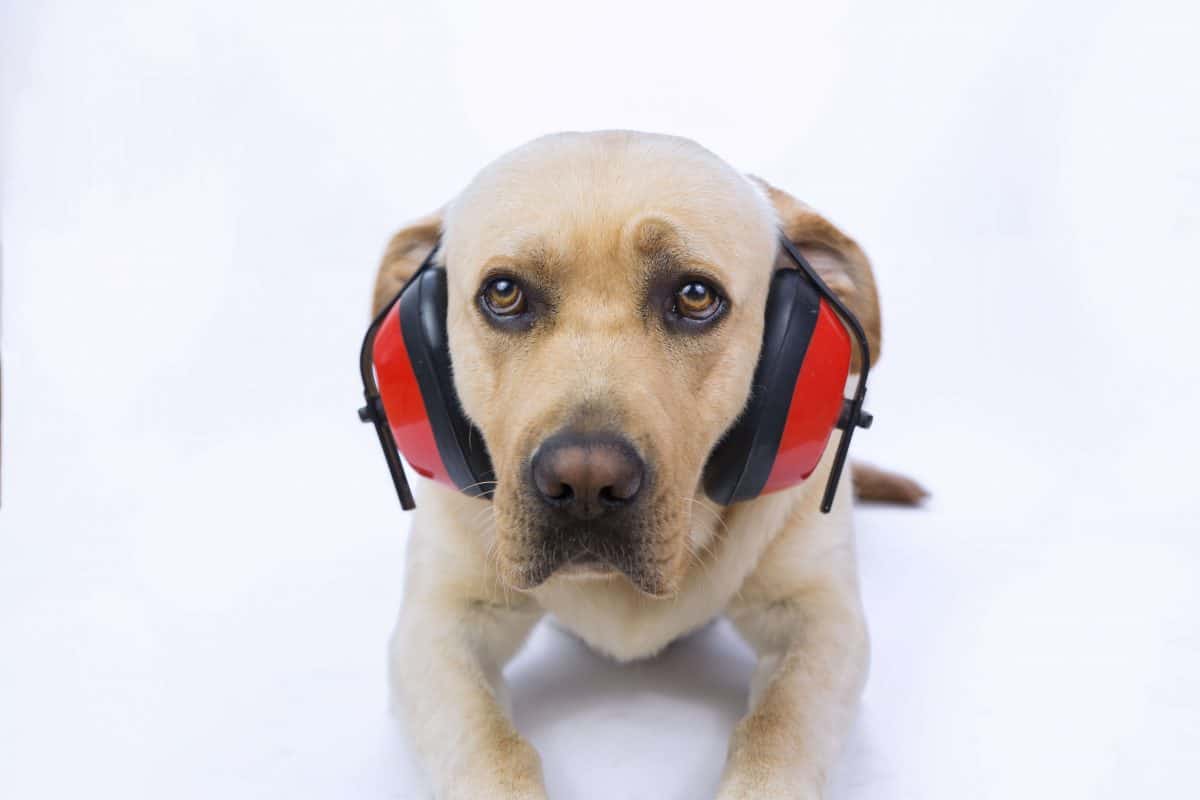Noise Phobia in Dogs

How to Help Your Dog's Fear of Loud Noises
Is your dog afraid of loud noises? Does she pant, pace, drool, shake, try to hide or try to escape whenever the thunder booms or the pops and bangs from fireworks happen? Noise phobia in dogs is a serious problem in some households. My dog used to panic in these situations. He would tremble like a leaf in a storm, pace, and alternate between trying to escape the sounds and trying to get as close to me as he could for comfort. It was heart breaking. But, there is hope for these dogs who suffer from sound and noise phobias.
There are three main categories of help we can provide for our sound-phobic dogs (and cats): management, calming/comforting, and behavior modification.
Management of Noise Phobia in Dogs
As best as possible, we can try to manage the environment. This might mean turning the volume on the TV up or using a white noise machine. Giving your dog a safe place to hide such as access to a dark closet or letting them settle in under the bed if that’s where they feel safest. I have had clients who took a small trip and rented a cabin in the woods well away from any fireworks display just to avoid making their dog hear those pops and booms.
From a safety standpoint, if you can’t eliminate the sound or remove your dog from that space, make sure doors and windows are closed and keep your dog inside so he can’t escape. I’ve known too many dogs who vanished during 4th of July celebrations because the owners went out and the dog escaped the yard. For some dogs, though, simply closing them inside will not be enough. I had one client whose dog jumped through a plate-glass window when left home alone during a severe thunderstorm!
Calming and Comforting
Contrary to some suggestions, it is not possible to “reinforce” fear. This is important in this discussion because many dogs will actively seek reassurance from us. Our job is to help them feel safer. Of course, if you’re also anxious and you’re stroking your dog frantically and your voice is tight as you say “It’s OK, Fido…. I swear….”, this can increase your dog’s fear because it’s obvious that you are also afraid. But, if you are calm and relaxed and your dog seeks contact and you allow this – let the dog press against you, rest your hand on their side as they lie near you – it can be extremely comforting. Your stillness when the thunder rumbles can help your dog feel more secure because you are secure.
If my dog asks for lap time when the ‘noise monster’ arrives I always allow it. It helps him tremble less and he clearly feels safer with that physical contact.
Many dogs who may not like to be hugged by people, will find comfort in anxiety wraps such as ThunderShirt. Other comforting options include Adaptil (dog appeasing pheromone) which can be purchased as a collar to wear, a spray, or a plug-in diffuser, or over-the-counter calming chews.
Behavior Modification
While the above options might help mitigate the panic a little, they don’t work to reduce the dog’s overall fear of the experience. But we can do some things to help the dog be less fearful of the “noise monster” in the future.
Medication: when the fear is severe, the suffering is real. In those situations, using short-term, fast-acting anti-anxiety medication is a very appropriate adjunct to any behavior plan. There’s even a new medication called Sileo that has been FDA approved specifically for noise phobia in dogs.
Behavior Plan: Using counter conditioning to help your dog associate the scary noises with tasty food and happy activities can go a very long way to helping them learn that the noises are not lethal. With my dogs, I keep treats (or their regular food if the noise is happening at meal time) nearby. I wait for the thunder to rumble (or the firecracker to boom) and then in a very cheery and excited voice, but fairly low volume, I announce “Yay! Boomies!!!!!!!! And then I scatter some food on the floor for my pups to scavenge and sniff out. Being new to the Midwest, this is the first proper ‘wet’ season my dogs have experienced. They’ve never dealt with so much thunder in their lives! For the first several storms, I needed to give my older dog Alprazolam along with our counter conditioning plan to help him through the storm. But the last three storms, he has not needed his medication. Just the cheery “Yay! Boomies!” and the party that goes with it.
Author - Jody Epstein
Jody Epstein is a certified behavior consultant, certified professional dog trainer, and holds a master’s degree in animal behavior from Tufts University. She has been training professionally for more than 12 years and is pleased to be part of the Academy of Pet Careers team, teaching the next generation of trainers. Look out for her blogs on all things dog training and animal behavior.

